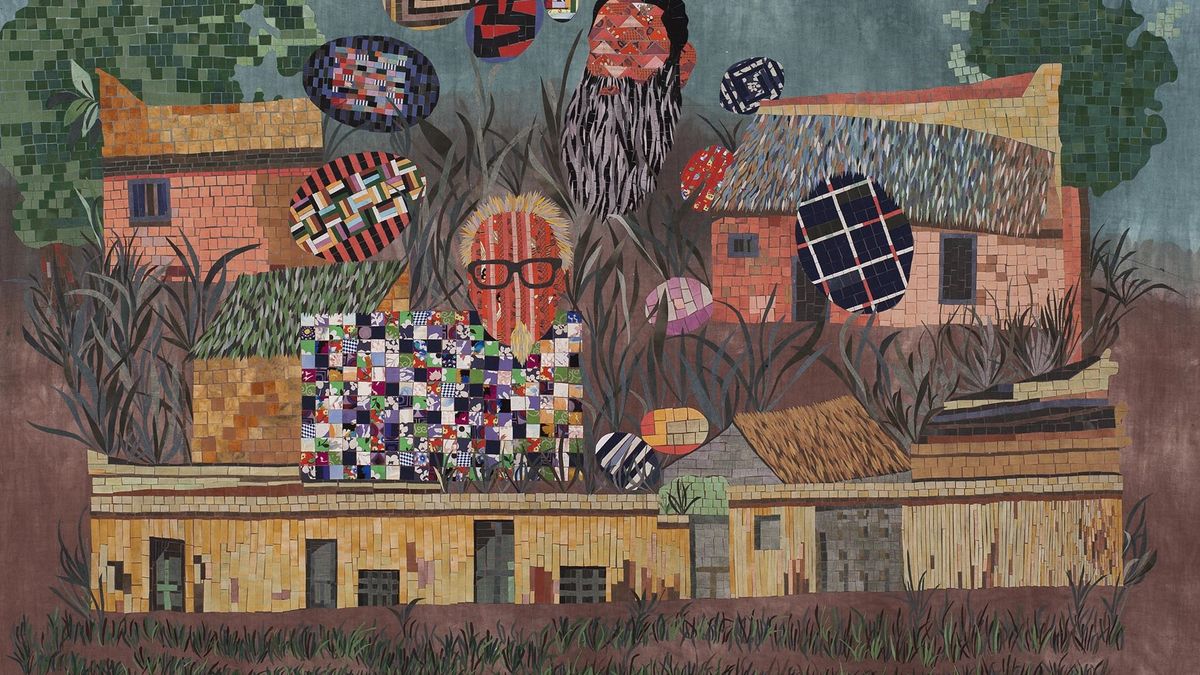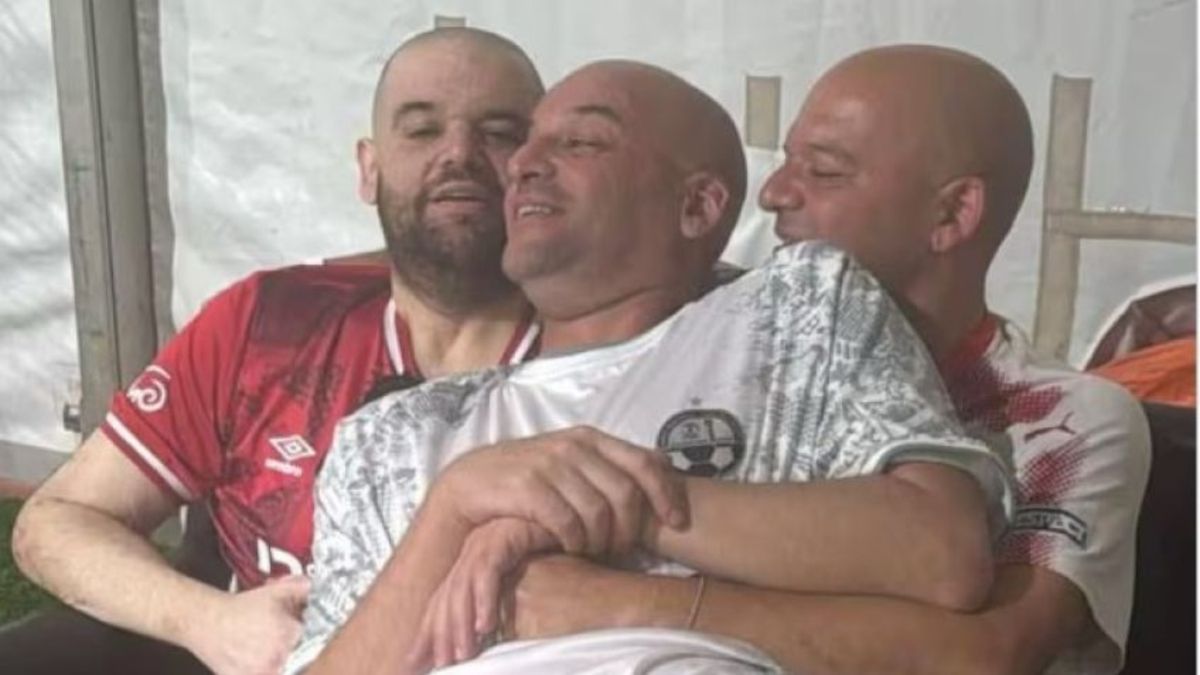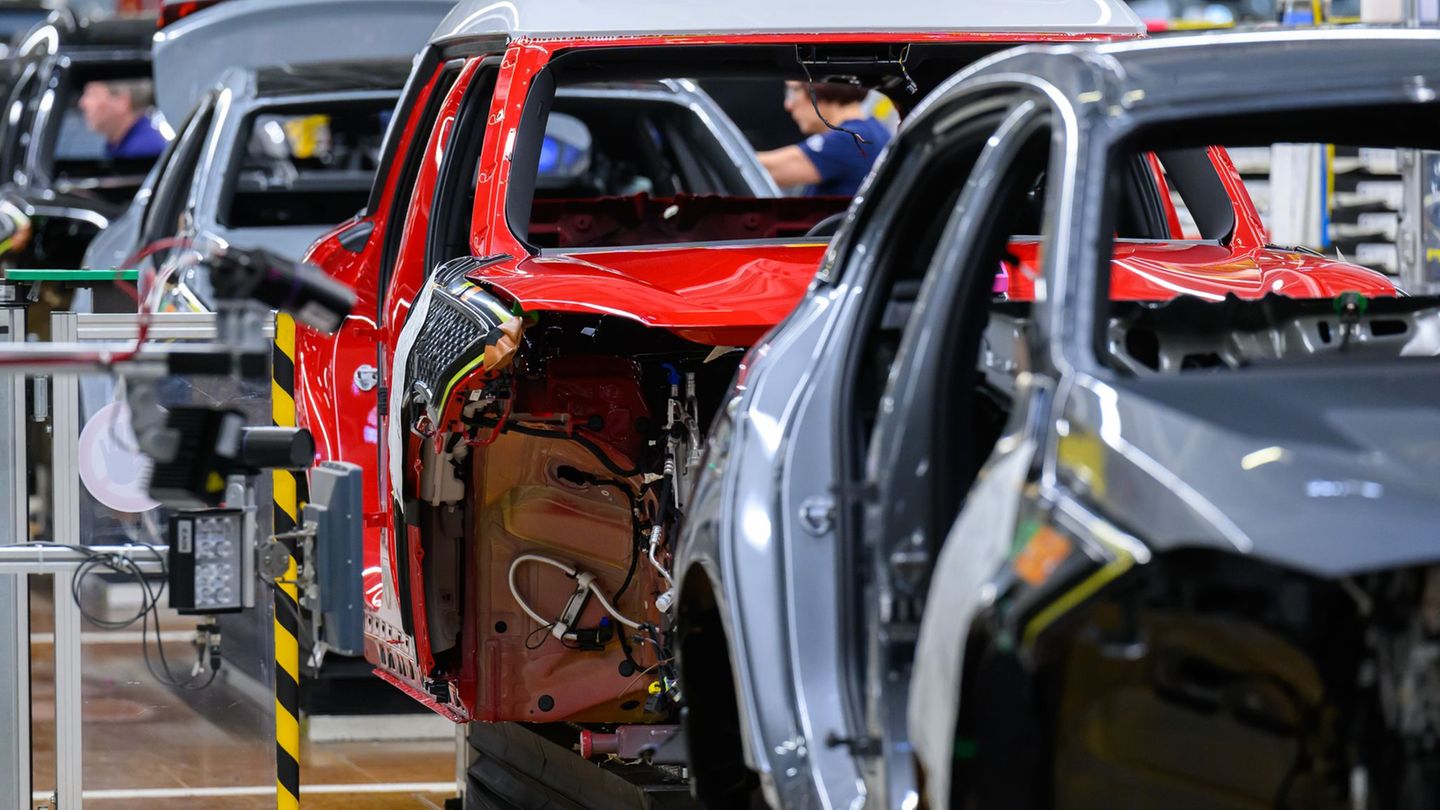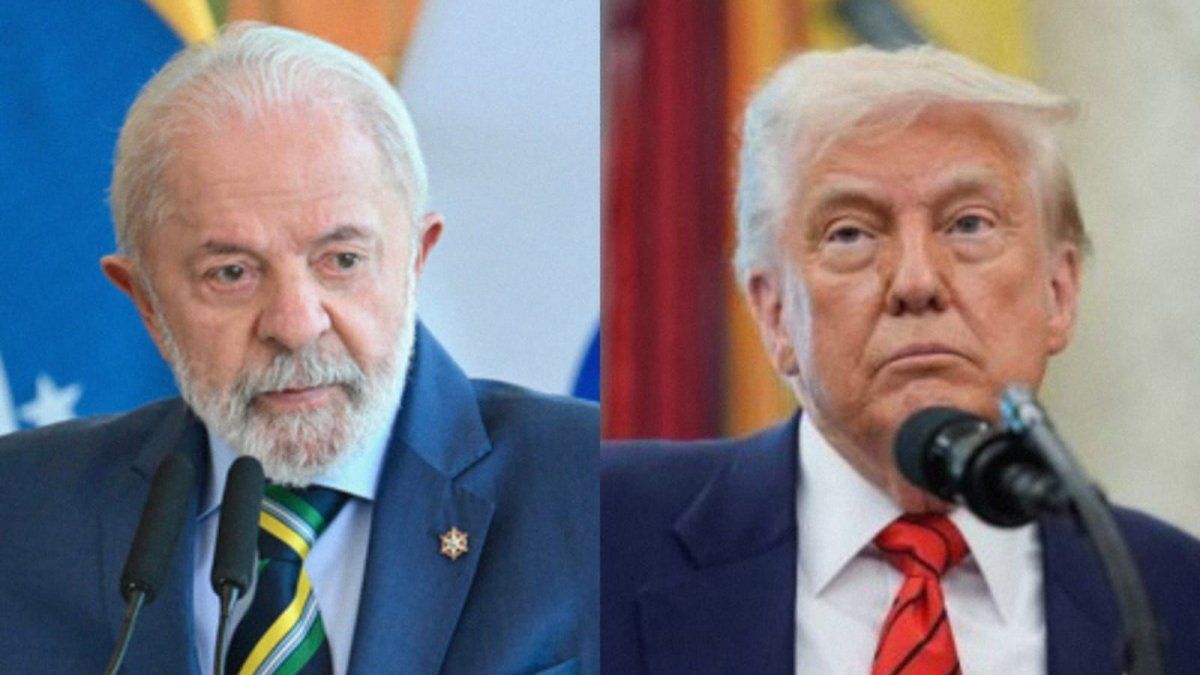“Leo Chiachio (Buenos Aires, 1969) and Daniel Giannone (Córdoba, 1964) are a couple of artists united by their creativity and also by love in 2003, turning to textiles to become others and leave behind the individual gestures that characterized their painting and drawing.”
This is how the curatorial text of Leandro Martinez Depietri which takes us by the hand on a journey through their lives, experiences, travels, commitments of a social, historical, and political nature in the extraordinary exhibition “Living their lives” which is on display in the Amalita Collection.
It is not only the mastery of embroidery with any possible material, seed beads, pearls, glitter of all kinds on wool, fabrics, handkerchiefs, dishcloths, cushion covers in “petit point”, found antique tapestries, a large accumulation of materials that “put on an equal footing” Pompeian mosaics, Kabuki masks, Guaraní textiles, Rococo tapestries.
The exhibition begins with a sort of museum tour that includes the famous painting Fernando Fader “The Shawls of Manila”loaned by the National Museum of Fine Arts, which was awarded the Prize of the National Salon of 1914; a work of Jose Malancatributes that extend to a pioneering artist from Cordoba, Olympia Payer (1893-1989). This space will also feature a tribute to the great English painter David Hockney (1937) and his famous “A bigger splash”painted in 1967, from his series “Pools”a place of intimacy and vindication in which a more liberated sexuality was exercised.
Another source of inspiration was Chinatown, Japanese and Indian culture, the decoration of Japanese Imari-style porcelain and its exotic flowers and satsuma with very intricate designs. In 2018 they resided in China and the result was “Comrades in Shanghai” which was used to designate the homosexual community in China.
The exhibition is full of quotes such as when they saw the mural of Raul Dominguez (1918-1999) at the Rosario River Station. Dominguez, “the painter of the islands”figurative, portraitist of the coastal region, author of a dozen murals dedicated to the Paraná of great ethnographic and artistic value. The native flora of the coast is in “The family in the cheerful greenery”winning work in 2013 at the Cité Internationale de la Tapisserie d’Aubusson.
They explore the figure of the Ekeko, Andean symbol of abundance, fertility and joyAs you walk through the exhibition, your admiration for the work of Chiachio & Giannone because it is not only their manual dexterity, humor and irony, but also the research behind the works.
They also cite Ricardo Rojas, “The country of the jungle”already Horacio Quiroga in “Tales of love, madness and death”. To the great artist from Salta Carlos “Straw” Garcia Besa connoisseur of ancestral wisdom who participated in rites and ceremonies. He became a tapestry maker and discovered in textiles the fiber that wove American history
4.jpg
“Firefighters” (2011). Hand-embroidered with cotton threads and jewel effect on Alexander Henry fabric, by Chiachio & Giannone.
Martinez Depietri It points out the interest that arose in the 60s and 70s regarding Latin America in the face of neocolonialism and North American imperialism during the Cold War.
At the core “Caribbean Corner” Works exhibited in Guatemala and Colombia are on display, the funds for which were allocated to local community productions. They arrived in the town of San Jacinto, where hammock crafts are produced with native flowers and leaves.
In 2016 they visited Pompeii and brought to the fabric the technique of textile mosaic mixed with the design of the Bauhaus or the gay icon of San Sebastian in the landscape of northern Argentina.
At the core “The Old World”, Depietri points out that Chiachio & Giannone amalgamate 2000 years of history. Hence the quote from the Austrian historian Alois Riegl (1858-1905), considered one of the founders of art criticism as an autonomous discipline, who analyzed the sustained vitality of ornamentation as a necessity and spiritual search of humanity.
Close this tour with “The invention of the chiffon-eaters”allusion to the comechingones, origin of Leo Chiachio. The “chiffoniers” collected scraps of fabric discarded by the Parisian textile industry in the 18th and 19th centuries. They also borrowed from Anni Albersone of the most important textile artists of the 20th century, a professor at the Bauhaus, wife of Joseph Albers, of Gunta Stölzl, also a professor and director of the textile workshop at the Bauhaus, as well as of the Argentine Cesar Paternosto who dealt with the Amerindian theme in his abstractions.
An unmissable exhibition of two artists who “paint” with needles instead of brushes and with threads instead of oila walk through the history of art, an exuberant fantasy, a position taken and a commitment to life without any euphemism
(Olga Cosettini 141. Puerto Madero. Thursday to Sunday from 12 to 20. Closing in February.)
Source: Ambito
I am a 24-year-old writer and journalist who has been working in the news industry for the past two years. I write primarily about market news, so if you’re looking for insights into what’s going on in the stock market or economic indicators, you’ve come to the right place. I also dabble in writing articles on lifestyle trends and pop culture news.




